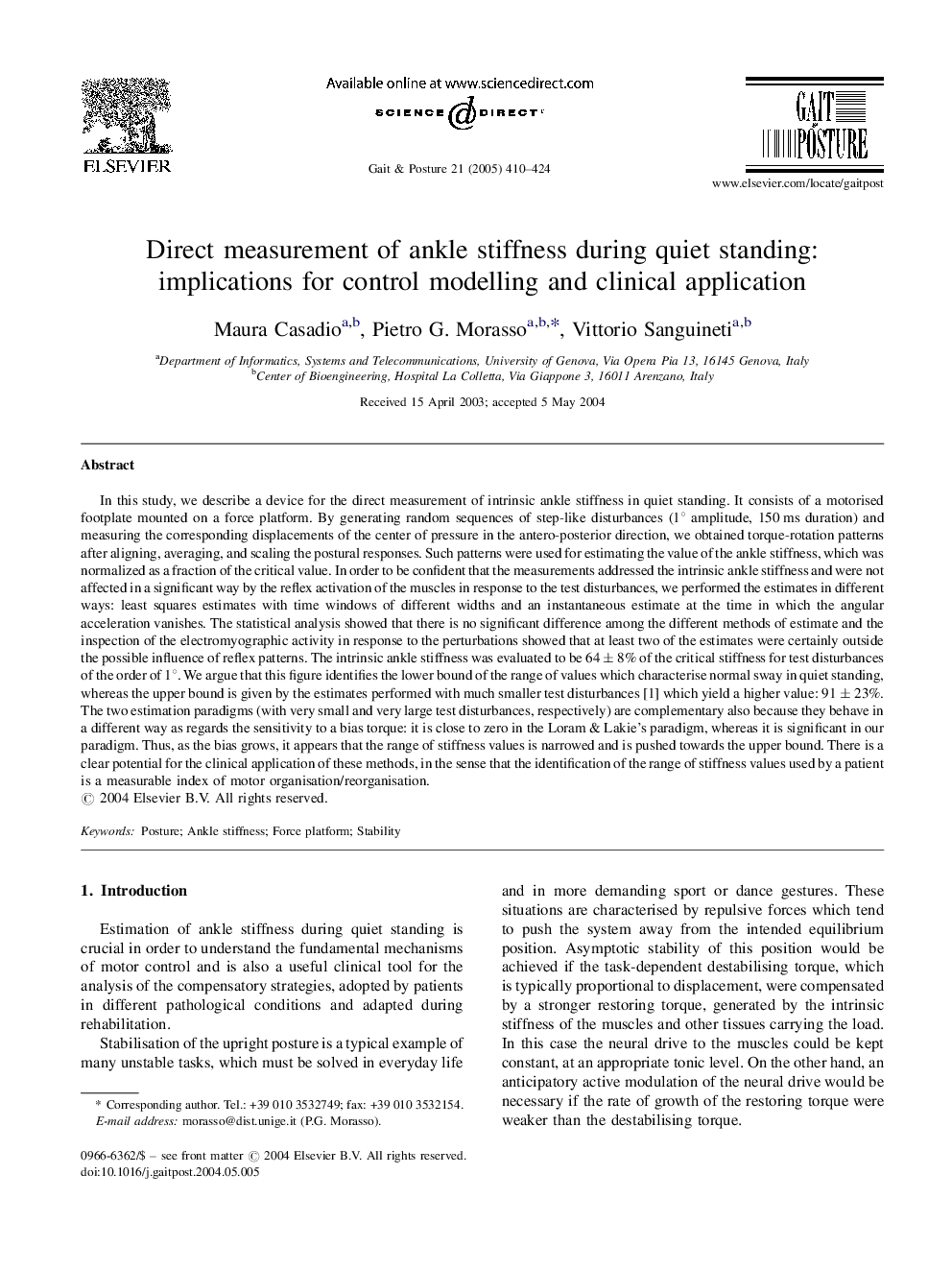| کد مقاله | کد نشریه | سال انتشار | مقاله انگلیسی | نسخه تمام متن |
|---|---|---|---|---|
| 9352728 | 1265720 | 2005 | 15 صفحه PDF | دانلود رایگان |
عنوان انگلیسی مقاله ISI
Direct measurement of ankle stiffness during quiet standing: implications for control modelling and clinical application
دانلود مقاله + سفارش ترجمه
دانلود مقاله ISI انگلیسی
رایگان برای ایرانیان
کلمات کلیدی
موضوعات مرتبط
علوم پزشکی و سلامت
پزشکی و دندانپزشکی
ارتوپدی، پزشکی ورزشی و توانبخشی
پیش نمایش صفحه اول مقاله

چکیده انگلیسی
In this study, we describe a device for the direct measurement of intrinsic ankle stiffness in quiet standing. It consists of a motorised footplate mounted on a force platform. By generating random sequences of step-like disturbances (1° amplitude, 150 ms duration) and measuring the corresponding displacements of the center of pressure in the antero-posterior direction, we obtained torque-rotation patterns after aligning, averaging, and scaling the postural responses. Such patterns were used for estimating the value of the ankle stiffness, which was normalized as a fraction of the critical value. In order to be confident that the measurements addressed the intrinsic ankle stiffness and were not affected in a significant way by the reflex activation of the muscles in response to the test disturbances, we performed the estimates in different ways: least squares estimates with time windows of different widths and an instantaneous estimate at the time in which the angular acceleration vanishes. The statistical analysis showed that there is no significant difference among the different methods of estimate and the inspection of the electromyographic activity in response to the perturbations showed that at least two of the estimates were certainly outside the possible influence of reflex patterns. The intrinsic ankle stiffness was evaluated to be 64 ± 8% of the critical stiffness for test disturbances of the order of 1°. We argue that this figure identifies the lower bound of the range of values which characterise normal sway in quiet standing, whereas the upper bound is given by the estimates performed with much smaller test disturbances [1] which yield a higher value: 91 ± 23%. The two estimation paradigms (with very small and very large test disturbances, respectively) are complementary also because they behave in a different way as regards the sensitivity to a bias torque: it is close to zero in the Loram & Lakie's paradigm, whereas it is significant in our paradigm. Thus, as the bias grows, it appears that the range of stiffness values is narrowed and is pushed towards the upper bound. There is a clear potential for the clinical application of these methods, in the sense that the identification of the range of stiffness values used by a patient is a measurable index of motor organisation/reorganisation.
ناشر
Database: Elsevier - ScienceDirect (ساینس دایرکت)
Journal: Gait & Posture - Volume 21, Issue 4, June 2005, Pages 410-424
Journal: Gait & Posture - Volume 21, Issue 4, June 2005, Pages 410-424
نویسندگان
Maura Casadio, Pietro G. Morasso, Vittorio Sanguineti,